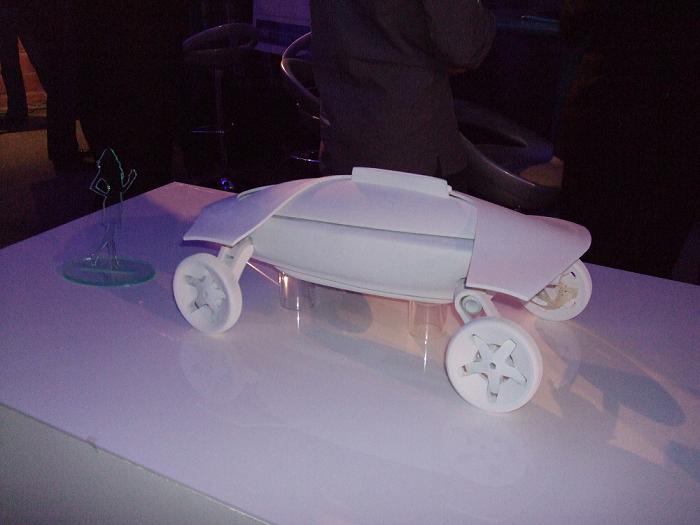This article is more than 1 year old
NHS study produces ejector-seat ambulance design
Projectile paramedics to the rescue
There are a lot of medical and healthcare tech programmes underway at the moment, but not many of them feature an ambulance equipped with an ejector seat. Here at the Pioneers 09 save-the-economy-through-techbiz expo in London, though, just such a concept model is on display.

Madam, I can see right through you. You adore hunky projectile paramedics.
The model is part of the so-called "smart pods project", a joint venture between the Engineering and Physical Sciences Research Council (EPSRC - hosts of Pioneers 09) and, well, the Royal College of Art, actually. Smart Pods is designed to use improved ambulance and paramedic tech gear to shift more care out of hospitals and into the community, reducing the number of patients who need to be brought back to A&E departments.
The ejector-seat ambulance, unsurprisingly, comes from the RCA side of the collaboration rather than the EPSRC's various collaborators from the NHS and so on. It seems that initial findings from the Smart Pods studies were presented to the master's degree RCA students in vehicle design, and they produced "a range of original and innovative design solutions... a direct response to the Smart Pods data... [they] provide an insight into what urgent and emergency vehicles of the future might look like".
Perhaps the most original of the concepts produced by the art students was the "Autocare", brainchild of RCA masters' candidate Augustin Barbot. According to Barbot:
Speed is of the essence in the ambulance service. The Autocare Concept aims to get the pre-hospital clinician on-scene and ready to treat the patient as soon as possible.The design includes an ejector-type driving seat for a single clinician. The seat is activated once the vehicle is on-scene and projects the driver outside the vehicle. The seat is equipped with all the treatment packages required for the patient and deploys as a backpack with the clinician.
Other concepts the art students came up with in direct response to the study data included an ambulance with a "revolutionary interior, which morphs into shape" and various more ordinary notions in which response vehicles would deploy tents, extending body shells and other camper-van type structures to create temporary on-street clinics.
Dave Whiting of the East Midlands Ambulance Service NHS Trust says the Smart Pods project has been "grounded in reality". Samantha Forrest, head of research in the NHS purchasing bureau, says that "the NHS is required, not only to demonstrate value from all its processes, but to provide a robust evidence base for its decision making... Smart Pods has recognised the importance of procurement from the outset... The findings will be important."
Sir Christopher Frayling, rector of the RCA, says that the art college is required by its charter to use its art and design talent to aid social development.
"At last we are honouring that commitment," he writes, referring to the RCA contribution to Smart Pods.
Rob Thompson of the RCA backpedalled a bit on the paramedic-hurling ambulance as part of such lofty goals. "It's blue sky," he told the Reg. "You've got to have a bit of fun, haven't you?" ®
